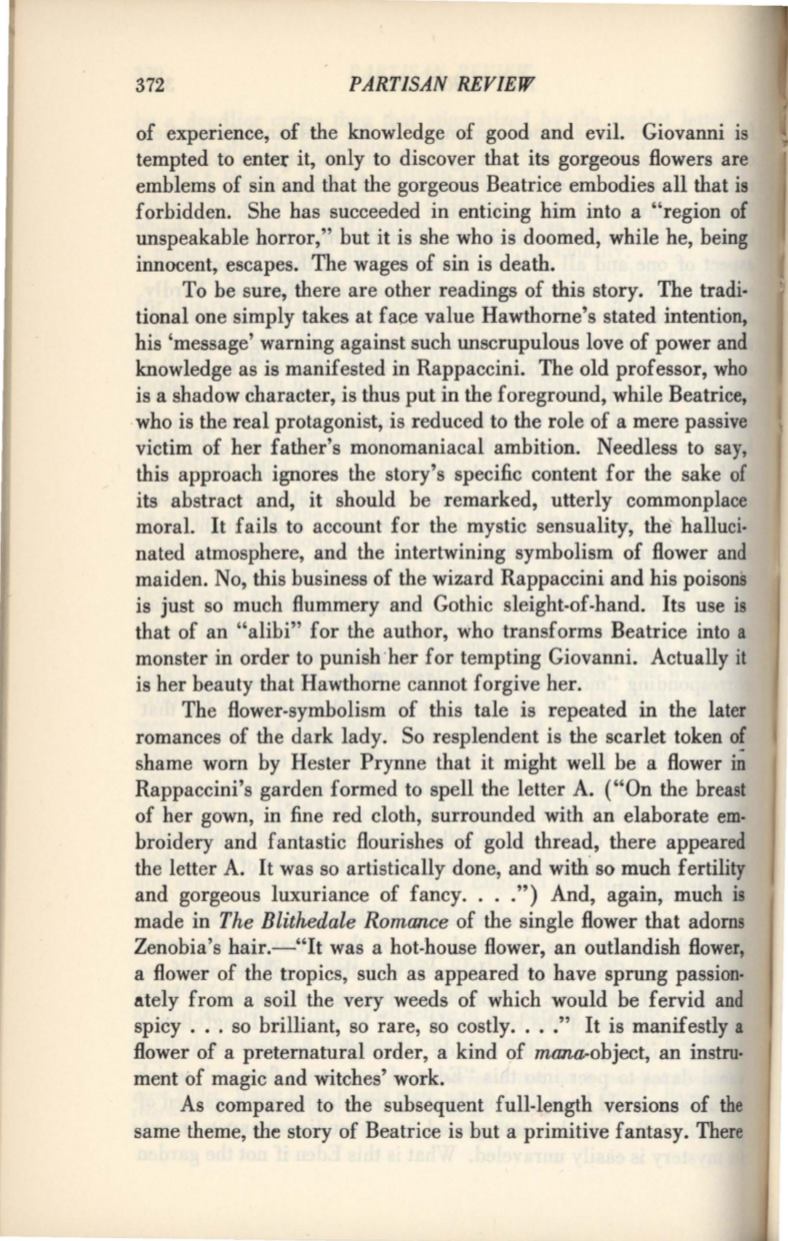
372
PARTISAN REVIEW
of experience, of the knowledge of good and evil. Giovanni is
tempted to enter it, only to discover that its gorgeous flowers are
emblems of sin and that the gorgeous Beatrice embodies all that is
forbidden. She has succeeded in enticing him into a "region of
unspeakable horror," but it is she who is doomed, while he, being
innocent, escapes. The wages of sin is death.
To be sure, there are other readings of this story. The tradi·
tional one simply takes at face value Hawthorne's stated intention,
his 'message' warning against such unscrupulous love of power and
knowledge as is manifested in Rappaccini. The old professor, who
is a shadow character, is thus put in the foreground, while Beatrice,
.who is the real protagonist, is reduced to the role of a mere passive
victim of her father's monomaniacal ambition. Needless to say,
this approach ignores the story's specific content for the sake of
its abstract and, it should be remarked, utterly commonplace
moral.
It
fails to account for the mystic sensuality, the halluci·
nated atmosphere, and the intertwining symbolism of flower and
maiden. No, this business of the wizard Rappaccini and his poisons
is just so much flummery and Gothic sleight-of-hand. Its use is
that of an "alibi" for the author, who transforms Beatrice into a
monster in order to punish her for tempting Giovanni. Actually it
is her beauty that Hawthorne cannot forgive her.
The flower-symbolism of this tale is repeated in the later
romances of the dark lady. So resplendent is the scarlet token of
shame worn by Hester Prynne that it might well be a flower
i~
Rappaccini's garden formed to spell the letter A. ("On the breast
of her gown, in fine red cloth, surrounded with an elaborate em·
broidery and fantastic flourishes of gold thread, there appeared
the letter A. It was so artistically done, and with. so much fertility
and gorgeous luxuriance of fancy....") And, again, much is
made in
The Blithedale Romance
of the single flower that adorns
Zenobia's hair.-"lt was a hot-house flower, an outlandish flower,
a flower of the tropics, such as appeared to have sprung passion·
ately from a soil the very weeds of which would be fervid and
spicy ... so brilliant, so rare, so costly...."
It
is manifestly a
flower of a preternatural order, a kind of mana-object, an instru·
ment of magic and witches' work.
As compared to the subsequent full-length versions of the
same theme, the story of Beatrice is but a primitive fantasy. There


